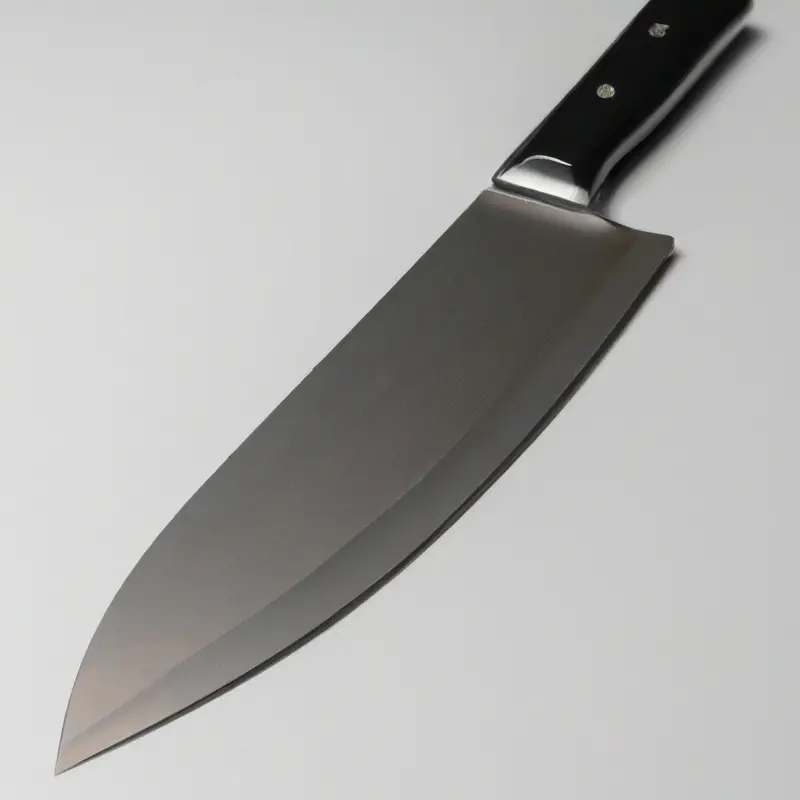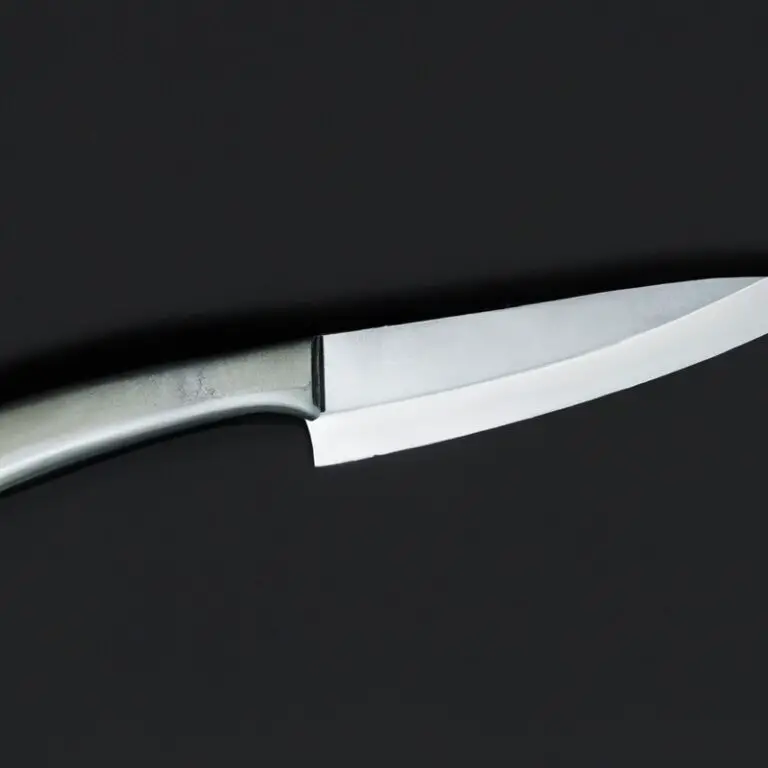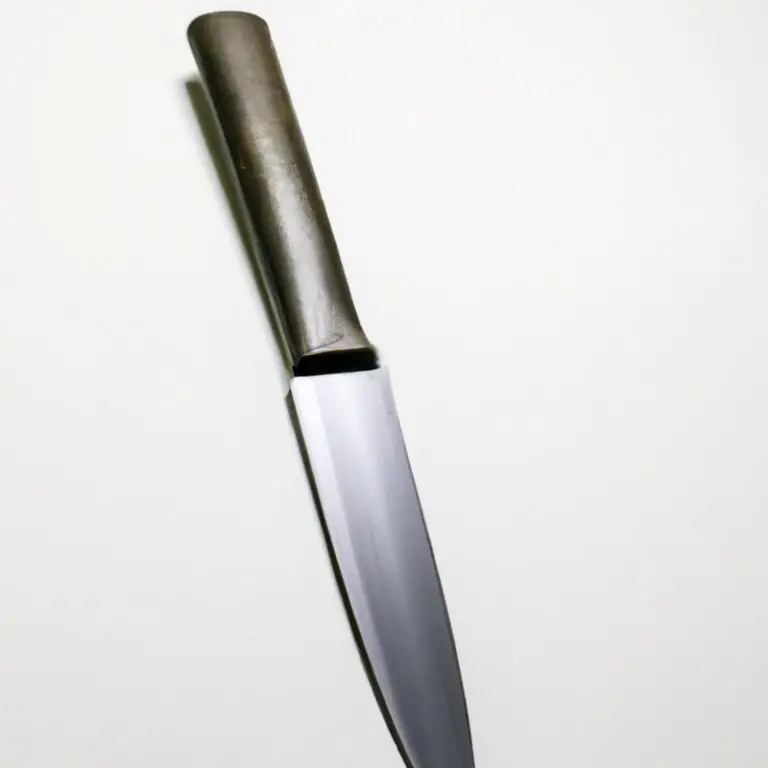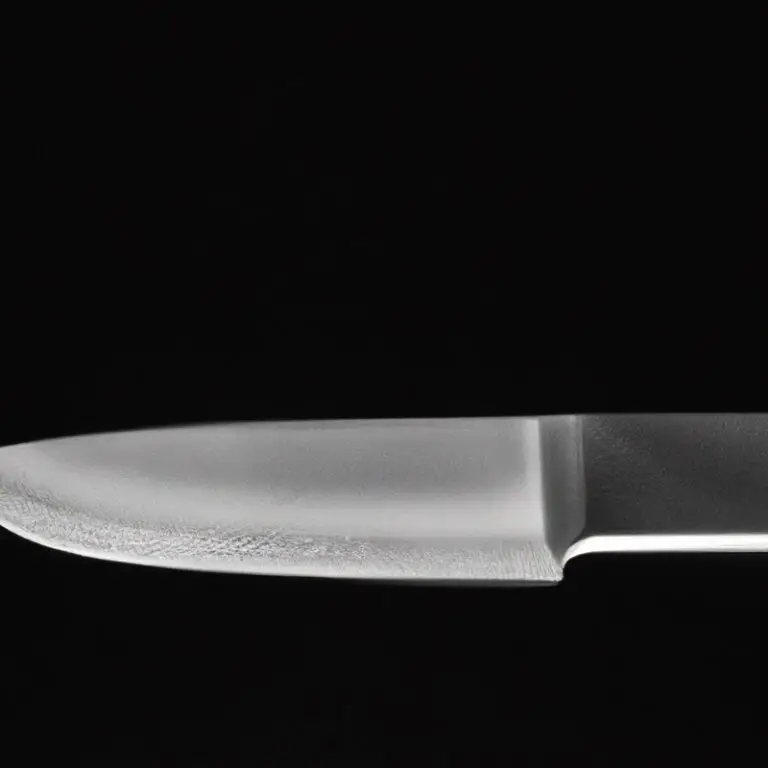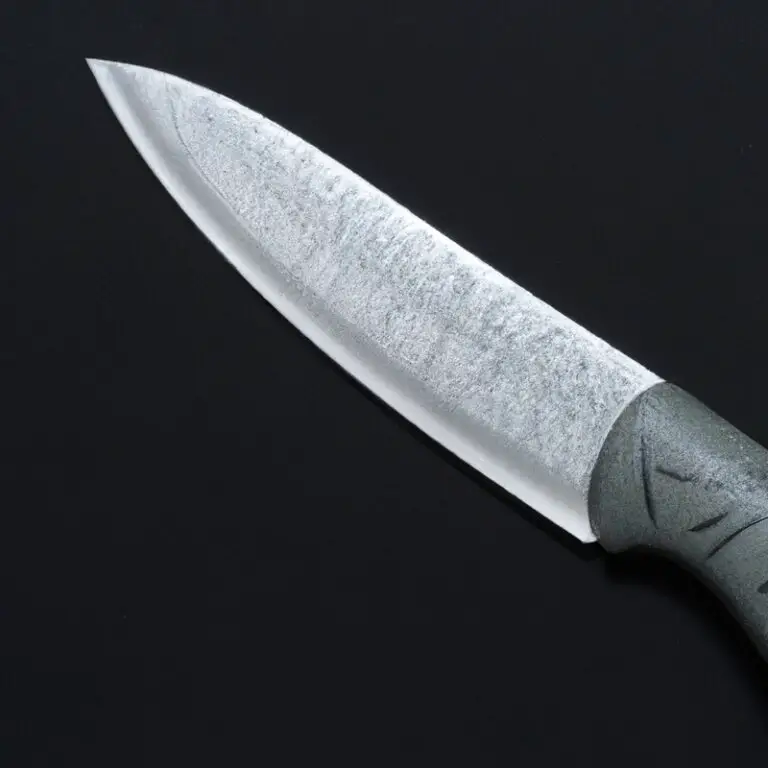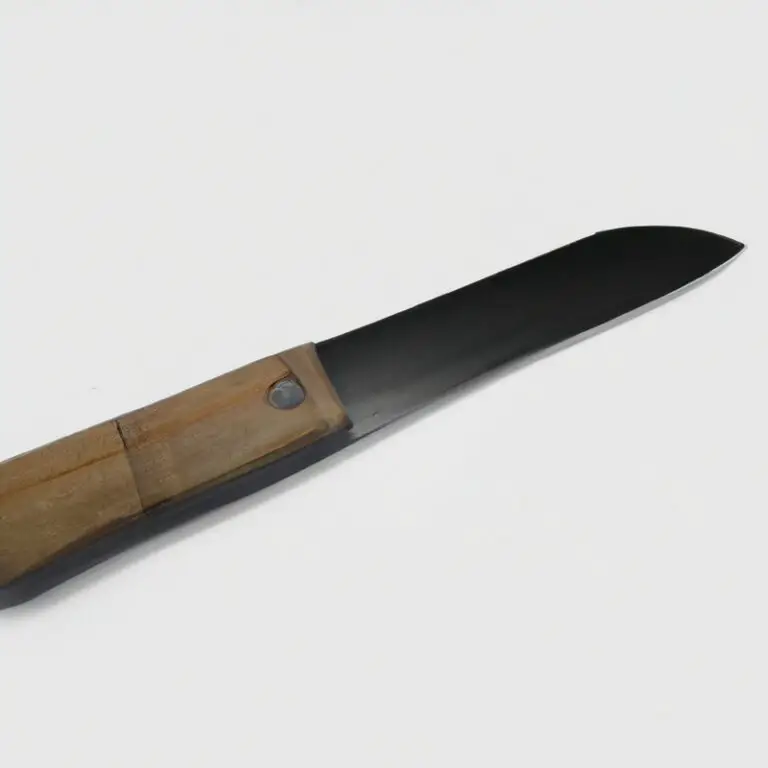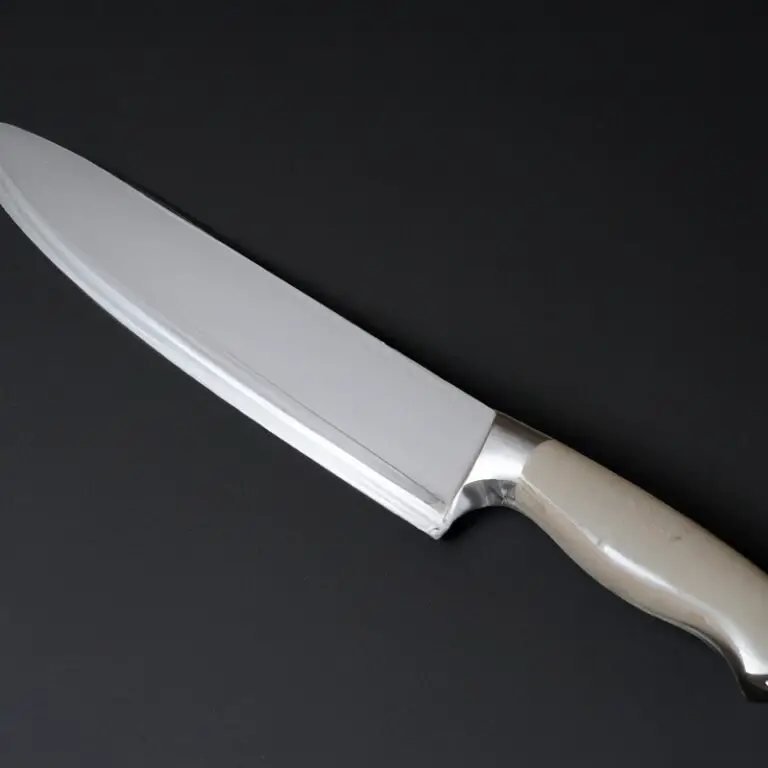What Are The Essential Features Of a Gyuto Knife For Beginners? Unleash Your Skills!
Key Takeaways:
- A beginner’s Gyuto knife should have a sharp and thin blade, suitable for precise cuts and minimal resistance.
- The handle should be ergonomic, comfortable to grip, and well-balanced to prevent hand fatigue.
- High-quality steel and a durable construction are crucial for longevity and optimal performance.
- Proper care and maintenance, such as regular sharpening and hand washing, are essential to extend the knife’s lifespan and maintain its quality.
Are you a beginner cook looking to upgrade your kitchen arsenal with a reliable chef’s knife? Look no further than the Gyuto knife – a versatile and essential tool in Japanese cuisine.
In this article, I will guide you through everything you need to know about the essential features to consider when choosing your first Gyuto knife.
From the anatomy of the blade to the importance of handle and balance, I will help you make an informed decision on the best Gyuto knife to match your cooking needs and preferences. No more confusion or guesswork – let’s get started.
| Feature | Description |
|---|---|
| Blade Material | A high-quality steel, such as VG-10 or AUS-8, that holds a sharp edge and resists rust. |
| Blade Length | Between 8 and 10 inches, which provides a balance between maneuverability and cutting power. |
| Blade Shape | A curved shape known as a “belly” that allows for efficient slicing and rocking movements. |
| Handle Material | Durable and non-slip material, such as Micarta or G-10, that provides a comfortable grip even when wet. |
| Bolster | A thick part of the knife where the blade meets the handle, which adds weight and balance to the knife. |
| Tang | A full tang, meaning the metal of the blade extends to the end of the handle, which provides strength and balance. |
| Sharpness | A sharp and consistent blade, which allows for precise cuts and makes it easier to maintain the knife. |
| Price | An affordable option, typically between $100 and $200, that still provides high-quality materials and construction. |
Understanding the anatomy of a Gyuto knife
A Gyuto knife is a type of Japanese kitchen knife that is known for its versatility and sharpness. To understand what makes a Gyuto knife unique, it’s important to understand its anatomy.
The blade is typically made of high-quality steel, with some of the most common materials being carbon steel and stainless steel.
A high-quality blade not only provides sharpness and durability, but it also resists rust and corrosion. The length of a Gyuto knife ranges from 7 inches to 12 inches, with the length depending on personal preference and the intended use.
For example, a shorter blade is ideal for intricate tasks like peeling and trimming, while a longer blade is better suited for slicing and chopping larger ingredients.
The handle of a Gyuto knife can be made from a variety of materials such as wood, plastic, or even bone. It’s important to choose a material that is comfortable and easy to grip, especially when working with wet or slippery ingredients.
The thickness of the blade is another important factor to consider.
A thinner blade is better suited for tasks that require precision and delicate cuts, while a thicker blade is ideal for heavy-duty tasks like chopping through thick ingredients. Overall, understanding the anatomy of a Gyuto knife is crucial in finding the right one for your needs and ensuring that it performs effectively in the kitchen.
The importance of blade material in a Gyuto knife
The blade material in a Gyuto knife plays a crucial role in its performance and durability. High-quality blade materials like carbon steel and stainless steel offer excellent sharpness, edge retention, and resistance to corrosion.
Carbon steel has a sharper edge and is easier to sharpen, but it requires more maintenance than stainless steel.
Stainless steel is more resistant to rust and corrosion, making it a low-maintenance option. Damascus steel is another popular blade material that uses layering techniques to create a unique pattern and also offers excellent sharpness and durability.
When choosing a Gyuto knife, consider the blade material carefully to ensure you select a knife that meets your needs and preferences.
Why the length of a Gyuto knife matters
The length of a Gyuto knife matters because it affects the knife’s versatility and ease of use. A longer blade allows for more precise cuts and smooth slicing, while a shorter blade makes it easier to handle and control.
It is important to choose the right length based on your comfort level and the tasks you plan to use the knife for.
A typical Gyuto blade length ranges from 8 to 12 inches. Beginners should start with a blade length between 8 and 10 inches, as it strikes a balance between maneuverability and versatility.
Longer blades are suited for experienced chefs who can handle the additional weight and achieve more precise cuts.
Choosing the right handle for your Gyuto knife
Choosing the right handle for your Gyuto knife is crucial for comfort and safety during use. There are several types of materials used for handles, including wood, plastic, and even metal.
Wood handles are popular and provide a comfortable grip but require proper maintenance to prevent cracking or warping.
Plastic handles are lightweight and easy to clean but may not be as durable as other materials. Metal handles are sturdy and durable but can be less comfortable to grip for extended periods.
It’s essential to choose a handle that feels comfortable in your hand and provides a secure grip.
Additionally, consider the balance of the knife—the handle and blade should feel evenly distributed to avoid putting excess strain on your wrist. Ultimately, the right handle material will depend on your personal preferences and intended use.
The significance of blade thickness in Gyuto knives
Blade thickness plays a crucial role in the performance of Gyuto knives. A thinner blade allows for easier and precision cutting, which is essential when preparing delicate ingredients such as fish or vegetables.
On the other hand, a thicker blade provides more durability and strength for heavier tasks such as breaking down meat or chopping hard roots.
It’s important to choose the appropriate thickness based on your specific needs. An average range of blade thickness for Gyuto knives is between 2mm to 3mm.
Keep in mind that thicker blades will add weight to the knife, reducing maneuverability.
A good quality Gyuto knife should have a precisely balanced thickness that offers both durability and precision cutting abilities.
How to properly maintain the sharpness of your Gyuto knife
To maintain the sharpness of your Gyuto knife, here are some tips to follow:
- Regularly sharpen your knife using a whetstone or sharpening rod.
- Use a honing rod to keep the knife sharp in between sharpening sessions.
- Keep your knife clean and dry to avoid rusting or corrosion.
- Store your knife properly, such as in a knife block or sheath, to prevent damage to the blade.
- Avoid using your knife on hard surfaces, such as cutting boards made of glass or ceramic, as it can dull the blade quickly.
By following these tips, you can extend the lifespan of your Gyuto knife and ensure that it stays sharp for all your kitchen needs.
The benefits of a full-tang construction in Gyuto knives
Full-tang construction in Gyuto knives means the blade continues down to the end of the handle, providing stability, balance, and durability. The primary benefit of a full-tang is strength.
This ensures that the knife blade and handle are securely attached, reducing the risk of breakage or detachment, even with frequent heavy use.
A full-tang also provides a balanced weight distribution, which makes it easier to control and maneuver the knife when cutting different food items. This construction enhances the knife’s overall performance and gives a sense of stability while using it.
A full-tang construction is a vital feature to consider when choosing a Gyuto knife to ensure a comfortable feel, reliable stability, and longevity.
The impact of the blade’s bevel on Gyuto knife performance
The bevel of a Gyuto knife’s blade plays a crucial role in its overall performance. The bevel refers to the angle at which the blade is sharpened.
The sharper the angle, the sharper the blade, but also the more fragile it becomes.
A steep angle can provide precision and control, ideal for delicate tasks such as filleting fish, while a broader angle tends to be more robust and durable, ideal for chopping and slicing tougher ingredients. A typical Gyuto knife has a bevel angle between 15 and 18 degrees, making it an all-purpose knife that excels in both precise and robust tasks with ease.
When choosing a Gyuto knife, it is essential to consider the bevel angle based on how you intend to use it.
Finding the perfect balance in a Gyuto knife
Finding the perfect balance in a Gyuto knife is crucial for achieving maximum control and precision while cutting. Balance refers to the distribution of weight between the blade and the handle of the knife.
A well-balanced Gyuto knife will feel comfortable in your hand, and you will experience less fatigue when using it for extended periods.
When choosing a Gyuto knife, it’s essential to determine your preferred balance point. You can find the balance point by holding the knife by its handle and allowing it to pivot.
The point where the knife sits evenly and level is the balance point.
Once you have identified the balance point, ensure that the weight distribution is suitable for your cutting style. For example, if you prefer to use the knife for detailed work, a front-heavy blade may not be ideal.
On the other hand, if you chop or slice more, a rear-heavy knife may not be suitable.
The best way to find the perfect balance in a Gyuto knife is through trial and error. Evaluate the knife’s performance by testing various cutting techniques and determining how the weight distribution affects your control and precision.
Ultimately, the ideal balance point is subjective and will depend on your personal preference and cutting requirements.
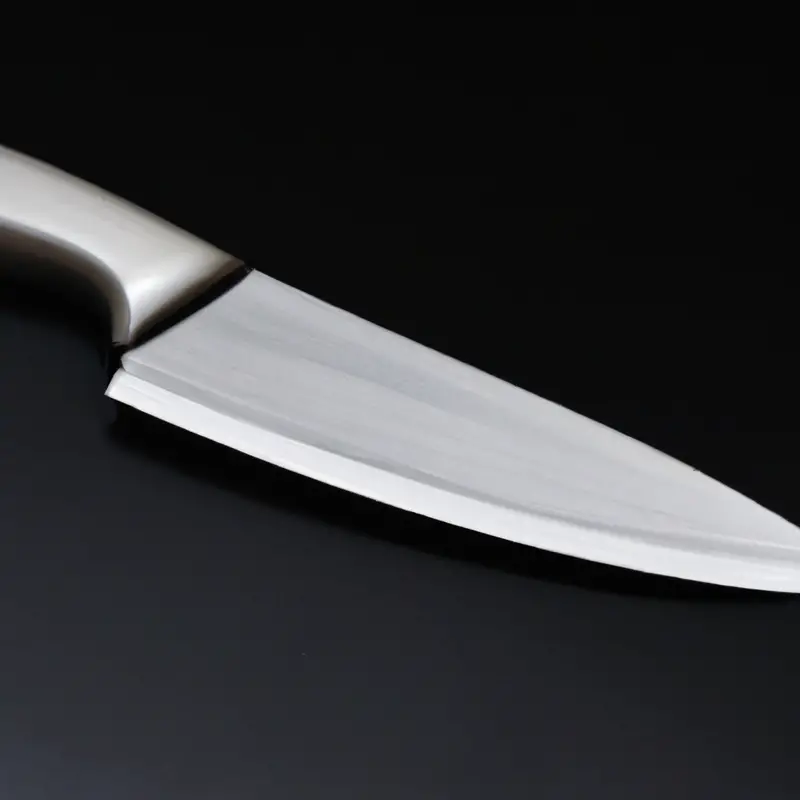
The significance of a comfortable grip on your Gyuto knife
The grip on your Gyuto knife is crucial as it provides a secure and comfortable hold, resulting in increased control and safety while cutting. A comfortable grip allows you to maintain a firm grip without causing unnecessary strain on your hand, even during extended cutting sessions.
A poorly designed handle can cause discomfort and lead to injury, making it important to choose a handle that suits your grip style and size.
Many high-quality Gyuto knives offer a range of handle sizes and materials, allowing you to find the perfect fit for your hands. A secure and comfortable grip will not only make working with your Gyuto knife feel better, but it will also lead to better results and safer use.
How Gyuto knives differ from other Japanese knives
Gyuto knives differ from other Japanese knives in several ways. Firstly, Gyuto knives have a western-style blade, which is wider and deeper compared to traditional Japanese knives.
Secondly, their straighter edge makes them perfect for slicing, chopping, and rocking back and forth, while other Japanese knives are suited for specific tasks.
Thirdly, Gyuto knives have thinner blades, which require more frequent honing and sharpening than other Japanese knives. Finally, Gyuto knives typically have a full-tang construction, meaning the blade extends throughout the handle, providing excellent balance and control.
Tips for safely using and storing your Gyuto knife
Tips for Safely Using and Storing Your Gyuto Knife:
- Always use a cutting board to avoid dulling the blade and causing damage to your work surface.
- Avoid cutting through hard or frozen foods or bones, as this could cause the blade to chip or become damaged.
- Always hold the knife securely and keep fingers away from the blade while cutting.
- Store your knife in a safe and secure place, away from children.
- Keep the blade dry and clean to prevent rust and corrosion.
- Invest in a blade guard or protective sleeve for safe storage in drawers or when transporting your knife.
- Sharpen your Gyuto knife regularly for a safer and more efficient cutting experience.
- When washing your knife, use a gentle soap and warm water and dry it thoroughly before storage.
- Avoid using abrasive cleaners or scrubbing pads that may scratch your blade or handle.
By following these simple tips and best practices, you can ensure safe and effective use of your Gyuto knife for all your culinary needs.
The versatile uses of a Gyuto knife in the kitchen
The Gyuto knife is incredibly versatile and can handle a broad range of kitchen tasks. Its sharp and thin blade is perfect for slicing, dicing, and chopping fruits, vegetables, and meats with ease.
With its pointed tip, it’s also fantastic for delicate tasks like filleting fish or cutting herbs.
Due to its flat edge, this knife is perfect for push-pull-cut techniques commonly used in Western-style cooking. Plus, its lightweight construction makes it easy to handle and maneuver.
Whether you’re a beginner cook or a professional chef, the Gyuto knife’s versatility means it should be a staple in your kitchen.
Why investing in a high-quality Gyuto knife is worth it for beginners
Investing in a high-quality Gyuto knife is worth it for beginners because it will provide a better cooking experience and help improve knife skills. High-quality Gyuto knives are made of superior materials such as high-carbon stainless steel, which allows for sharper edges and easier maintenance.
They also have a longer lifespan than cheaper alternatives and can last for decades with proper care.
High-quality Gyuto knives balance comfort, weight, and handle grip for optimal comfort and precision in handling. Additionally, having a reliable, sturdy, and ergonomic knife encourages the user to practice more knife techniques confidently.
Ultimately, investing in a high-quality Gyuto knife as a beginner is an investment you won’t regret.
How to properly sharpen and hone your Gyuto knife at home
To properly sharpen and hone your Gyuto knife at home, you will need a sharpening stone and a honing steel. First, soak the sharpening stone according to instructions.
Then, hold the knife at a 15-20 degree angle and slide it across the stone, starting from the base of the blade and moving towards the tip.
Repeat on the other side. Use a honing steel to straighten the blade by holding it at a 20 degree angle and pulling the knife down the steel in a diagonal motion.
Remember to always use a consistent angle, rinse the blade often to remove any metal shavings, and keep the blade lubricated with water or oil.
Properly maintaining the sharpness of your Gyuto knife is essential to its longevity and performance in the kitchen.
The importance of weight and balance when choosing a Gyuto knife
The weight and balance of a Gyuto knife are crucial to its overall performance and your comfort while using it. A well-balanced knife ensures that the weight is distributed evenly between the handle and the blade, thus reducing hand fatigue and allowing for more precise control.
Too much weight in the handle can result in an unbalanced blade and make it harder to handle.
Conversely, too much weight in the blade can make it unwieldy, especially when performing delicate tasks. When choosing a Gyuto knife, look for one that feels comfortable in your hand, with a blade and handle that are proportional to each other.
A balanced knife will make for easier and more efficient cutting, while reducing the risk of injury.
Comparing Western-style knives to Japanese-style Gyuto knives
When it comes to comparing Western-style knives and Japanese-style Gyuto knives, there are a few key differences to consider. Western-style knives are typically heavier and have thicker blades with a straighter edge, making them well-suited for heavier-duty tasks like chopping and hacking.
They also often have a bolster, the area between the blade and handle that provides extra balance and weight.
On the other hand, Japanese-style Gyuto knives typically have thinner and lighter blades with a curved edge, making them ideal for precision tasks like slicing and dicing. They also tend to have a thinner profile overall, which can make them more comfortable to hold and maneuver.
Ultimately, the choice between a Western-style knife and a Japanese-style Gyuto knife will depend on your personal preferences and the types of tasks you will be using the knife for in the kitchen.
It’s worth considering trying out both styles to see which feels most comfortable and efficient for you before making a final decision.
The role of a bolster in a Gyuto knife
The bolster in a Gyuto knife is a thick band of metal between the handle and the blade. Its primary role is to provide a balance and stability to the knife.
The bolster also helps to protect the hand from accidentally slipping forward onto the blade while in use.
Additionally, it adds weight to the knife, giving the user better control during various cutting tasks. However, some Gyuto knives may not have a bolster or may have a partial bolster, depending on the manufacturer and the design.
Beginners should consider choosing a Gyuto knife with a bolster as it offers greater control, balance, and safety during use.
The impact of a curved blade on the performance of a Gyuto knife
The curved blade of a Gyuto knife can significantly impact its performance. A slight curve on the blade can help in rocking or slicing motions, making it easier to chop or cut through vegetables, fruits, and meats.
It can also provide a better grip while cutting tougher items like bone or dense vegetables.
However, a too-curved blade can affect the knife’s precision and lead to uneven cuts. It is essential to choose a Gyuto knife with a blade curvature that matches your cutting style and needs, ensuring that you get the most out of your knife and perform kitchen tasks efficiently.
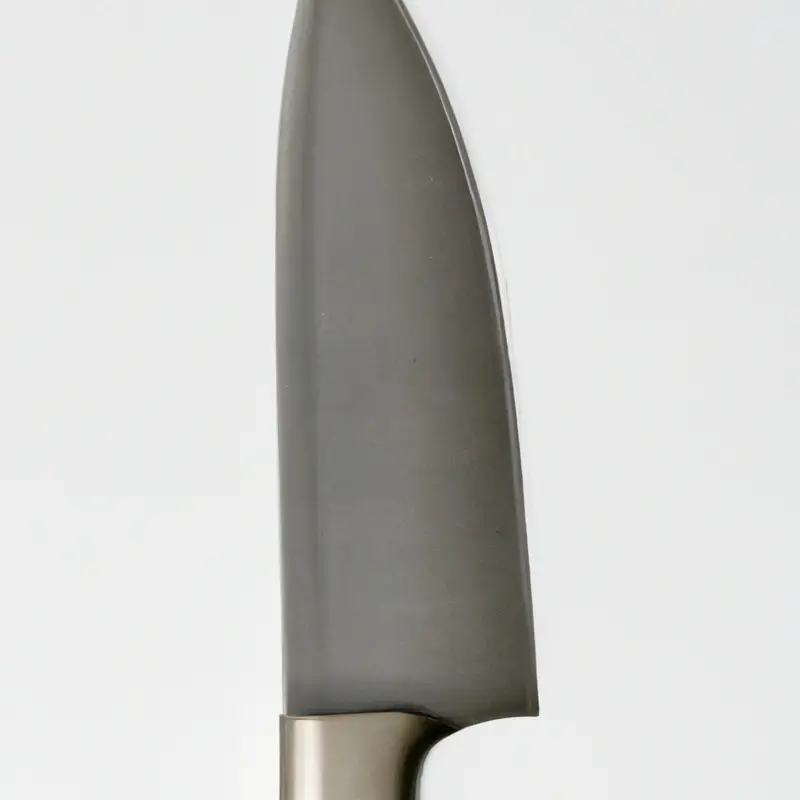
The ultimate guide to choosing the perfect Gyuto knife for your needs
When it comes to choosing the perfect Gyuto knife for your needs, consider the following factors:
- Blade material: Look for high-quality, durable steel such as VG-10 or AUS-10.
- Length: Choose a length that feels comfortable and appropriate for the tasks you’ll be using it for, typically 8-10 inches.
- Handle: Look for a handle that provides a comfortable and secure grip, such as one made of durable materials like wood, micarta, or G-10.
- Blade thickness: Choose a thickness that suits your cutting style, such as a thinner blade for delicate tasks and a thicker one for heavy-duty chopping.
- Full-tang construction: A full-tang construction provides better balance and durability.
- Bevel: Choose a bevel angle that suits your cutting needs, such as a shallower angle for precision cutting or a steeper one for tougher tasks.
- Balance: Look for a knife with a balance point that feels comfortable and natural in your hand.
- Weight: Choose a knife with a weight that’s comfortable for you to use, typically between 6-10 ounces.
- Bolster: A bolster can provide added balance and protection.
Overall, the perfect Gyuto knife will vary based on individual needs and preferences, but keeping these factors in mind can help guide your decision and ensure you choose a high-quality knife that will last for years to come.
Final Verdict
Choosing a Gyuto knife for beginners may seem overwhelming with all the different features available. However, understanding the essential features such as blade material, length, handle, thickness, tang construction, bevel, balance, weight, and comfort can help you make an informed decision.
Investing in a high-quality Gyuto knife is worth it as it can enhance your cooking experience and make meal preparation a breeze.
Remember to properly maintain and sharpen your Gyuto knife to prolong its lifespan. With the right Gyuto knife, you can take your culinary skills to the next level and impress your family and friends.
Choose wisely and enjoy the benefits for years to come.

